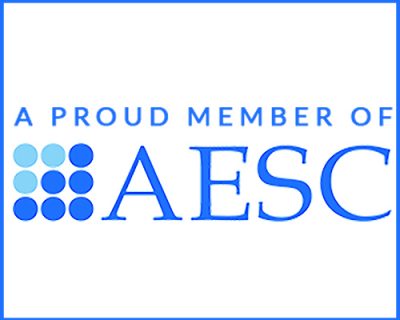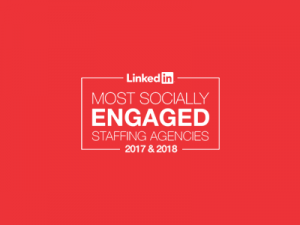
 Finding talent, interviewing, recruitment, hiring, search and selection ….it’s easy! It’s not rocket science. How hard can it be, get resumes, interview, have a chat, make an offer – done! If only this was true….
Finding talent, interviewing, recruitment, hiring, search and selection ….it’s easy! It’s not rocket science. How hard can it be, get resumes, interview, have a chat, make an offer – done! If only this was true….
This week I was asked how do you pick the right person at interview? How long have you got?! The person asking was disillusioned by a highly talented person leaving to take a very similar role elsewhere with the only obvious added benefit seeming to be ‘working closer to home’. The another business associate was being challenged by picking someone from 20 great resumes that all seemed to have the right technical experience. Both were apprehensive due to incorrect hires in the past that initially looked right on paper. They were desperate for the secret ingredient, the right answer, the one thing that I could tell them that they didn’t know to ask at interview to get it right.
Subsequently, I attended a meeting with a client who was completely frustrated and surprised when what they thought was a ‘perfect hire’, resigned after 2 months. They too wanted to know where did they go wrong, when the resume appeared to be perfect?
First and foremost – recruiting people is not easy. Picking the right person is even harder. We do it every day here at Underwood Executive and see, hear, talk and advise clients on how to do it better. It is an ongoing battle for most business owners – finding, sourcing and selecting the right people.
Here’s what all three situations had in common – you must look beyond what’s on paper and what’s technically being said at interview and hire for culture and motivational fit.
I agree that skills and experience are important. They are necessary in the recruiting process, but what causes you headaches and performance issues goes well beyond being able to do the job, it’s a person’s ability to fit in and being in the role for the right reasons.
How do you determine this? It’s not fool proof, but here are some quick guidelines to follow in a search and selection process to increase the odds:
- Technical skills & experience – is easy to assess from a resume, very factual, qualifications, systems experience etc. Some level of experience is still needed for most roles.
- Competencies –what are the competencies they need to do the job eg: strategic thinking, decision making, achievement drive. The key is that they must give a SPECIFIC example of a time when they have demonstrated this competency. This will usually occur in 3 parts (tell me about a time when…., what did you do and what was the outcome). If they don’t give a specific, they haven’t demonstrated the competency. Don’t ignore this – even if the resume is fantastic – if they can’t answer these questions, we follow the rule of thumb that past behaviour is a predictor of future behaviour.
- Motivation – this is often the trickiest part of the interview to assess. It involves asking questions around why they want the job, what is their perfect job, what other jobs have they applied for, why have they left previous jobs, what makes them stay with an employer, what makes them leave, who has been their favourite boss, who inspires them and why, where has been the best/worst culture they have worked in. Did I mention why they want this job? Not just any job. Why this job above all others in the market? And then tell me again why you want it – make sure they convince you.
- Warning signs – this is usually around behaviour during or post interview. For example, I had a candidate tell me they would call me Monday to confirm their interest in an opportunity, they called Tuesday at 5pm. For me and our culture, this is a warning sign they wouldn’t fit in as one of our values is integrity – you do what you say you will do.
- Reasons for leaving – don’t ever accept the first reason. I ask several times on the same job – tell me what were your reasons for leaving? What else contributed to you leaving? What other reasons were behind this decision? Probe, probe, probe and look for patterns of behaviour.
Always include motivation and culture questions in an interview and actively listen to what is (and sometimes what isn’t) being said at interview. In my experience, motivation and cultural fit is more important than skills and experience. The culture fit and motivation buys you loyalty, commitment and top performers, who in the long term outshine the power CV with a technical answer for everything at interview. Go with your gut – will you and your team enjoy working with this person every day of the week? And whatever you do – don’t “hope” that it will work out – it never does. Hope is not a recruitment strategy.


 ”Have you got any advice on my CV?” or “What do you think of my resume?” and “How can I improve my CV? are the questions we are asked every day here at Underwood Executive.
”Have you got any advice on my CV?” or “What do you think of my resume?” and “How can I improve my CV? are the questions we are asked every day here at Underwood Executive.


 Last week, our team travelled to Sydney to be part of LinkedIn’s Most Socially Engaged Staff Agencies awards to celebrate the best in social recruiting.
Last week, our team travelled to Sydney to be part of LinkedIn’s Most Socially Engaged Staff Agencies awards to celebrate the best in social recruiting.






 12 years ago, I was asked by my business coach to write down a list of all my frustrations in business and in life. I wrote a solid two pages of whinges. It was the permission I needed to have my own little pity parade with on orchestra of violins. It was effective. It gave me several views – an opportunity to offload, an opportunity to get clear, an opportunity to look at patterns and the light bulb moment I needed …….. it was all within my control to change.
12 years ago, I was asked by my business coach to write down a list of all my frustrations in business and in life. I wrote a solid two pages of whinges. It was the permission I needed to have my own little pity parade with on orchestra of violins. It was effective. It gave me several views – an opportunity to offload, an opportunity to get clear, an opportunity to look at patterns and the light bulb moment I needed …….. it was all within my control to change.




